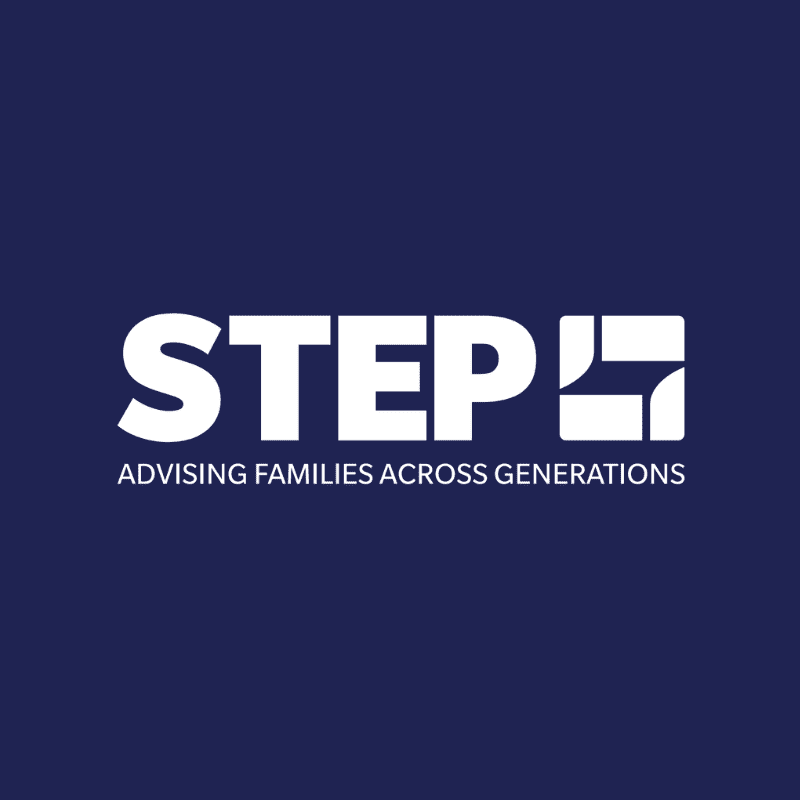In a STEP Journal article (Issue 4, 2021), which can be found below or downloaded here, Scott Weaver, General Counsel and Chief Fiduciary Officer at Willow Street, and Dominic Lawton-Smith TEP, Managing Director at Crestbridge Fiduciary, explore trends in the evolution of governance structures for international families from a US perspective.
Key Points
What is the issue? Families and their advisors are increasingly emphasizing leading practices for family and entity governance, often focused on identifying and managing risk to the greater family structure, values or framework.
What does it mean for me? Families continue to generate unrecognized risk via long‑term wealth‑transfer plans and investments that could be mitigated by proper family and entity governance.
What can I take away? Recent trends in the evolution of governance standards for families, particularly those with cross‑border activities, and observations to frame risk identification and responsive governance themes.
As a result of the COVID‑19 pandemic and the accelerating rate of change to global tax, legal and regulatory compliance frameworks, high‑net‑worth (HNW) families and their advisors are focused on questions of governance and compliance. The days of static wealth‑transfer planning are long gone; families and their advisors must now engage in continuous oversight and review of plans, strategies and implementation to ensure protection against risks presented by wealth‑transfer structures.
Families are often focused on financial risk and are typically well advised on the topic. Too often, compliance and governance risks are addressed as an afterthought rather than as a primary planning consideration. Proactive governance begins with understanding the challenges of implementing plans and administering entities to avoid inefficient or burdensome administration, or worse, unanticipated tax or legal consequences.
Proactive governance
In the current global tax and regulatory environment, a dynamic, robust, efficient and respected governance structure is necessary to identify and manage risk.
Family and entity governance are often two sides of the same coin. HNW families may take a proactive approach to family governance by:
- adopting and adhering to a family constitution or charter;
- involving and educating rising generations as to family history, values and wealth‑transfer structures;
- establishing long‑term, high‑trust relationships with sophisticated advisors; and
- developing and prioritizing family culture, i.e., creating a stable set of systems and processes that are supported and respected by family members.
Proactive families similarly adopt practices with respect to wealth‑transfer plans, entities and structures by:
- prioritizing optionality when designing or updating wealth‑transfer plans;
- appropriately introducing wealth‑transfer plans, strategies and relationships to rising leaders;
- planning proactively for succession of entity management and operations;
- identifying fiduciary and management structures that align with the family’s values and risk tolerance;
- emphasizing the importance of and benefits to strictly complying with governing documents and applicable law; and
- creating and adhering to replicable, consistent and efficient processes for addressing inevitable changes to plans and structures in response to the evolving tax, legal and regulatory environment.
Three solutions
For US‑situs planning, HNW families primarily rely on three fiduciary solutions to address the highly complex, technical and evolving governance and compliance regime: institutional trustees, directed trusts and private trust companies (PTCs). Institutional trustees offer HNW families the benefits of size, in‑house expertise and consolidated implementation, but specify the approach to risk‑management, compliance and compensation policies. Therefore, many families choose to maintain relationships with institutional providers for asset management, custody, lending and deposit relationships while transitioning to a more agile fiduciary solution.
Families that desire more flexibility from their fiduciary, especially in the areas of investment operations and risk management, often turn to a directed trust, whereby an individual or committee of family members or trusted advisors makes decisions regarding investments. An experienced administrative trustee provides implementation and governance services. This structure provides more flexibility and often more efficient delivery of service compared to an institutional trustee, but at the cost of shifting some of the fiduciary work and, therefore, risk to family members or trusted advisors. Although the trustee ultimately evaluates and implements governance and compliance activities, family and outside advisors play a much more active fiduciary role.
The directed trust model provides a framework for the fiduciary to adopt and implement the family’s judgement as to risk management and compliance without incurring, or being compensated for, additional fiduciary risk.
Finally, families with a strong advisory network or family office may prefer a PTC. However, by adding another layer of governance and compliance, PTCs create additional risks that must be properly managed. At the most basic, faithful adherence to operating documents, governance and ensuring a culture of compliance are essential elements of effective PTC risk management.
Nevertheless, a properly administered PTC is a powerful tool in furtherance of dynamic governance by providing a structured forum for ongoing dialogue between family members, trusted advisors and service providers around family‑wealth transfer plans. PTC management determines its risk tolerance, which in turn informs the PTC’s approach to risk management, including governance and regulatory compliance.
Moreover, the PTC creates additional opportunities for beneficiary education and engagement. Further, families are increasingly utilizing the PTC as a virtual family office to integrate family investment, fiduciary and concierge staff under one operating entity. In sum, the PTC structure allows the family to own and operate a bespoke, private, flexible, and responsive corporate fiduciary, managed and operated by family members, trusted advisors, key staff and outside service providers.
Families and advisors are also revisiting risk management with regard to structural complexity and situs. For many multinational families, the sheer volume of jurisdictions, entities and reporting requirements can become overwhelming, inefficient and costly. Families are increasingly consolidating entities and seeking to limit activity to jurisdictions with favorable, robust and sustainable planning environments.
With thoughtful and proactive planning, families may manage jurisdictional exposure and simplify structures without sacrificing geographic diversification or optionality. Of course, the benefits of such reforms must be balanced against the costs of advisory fees and implementation, as well as the opportunity costs to family time and focus.
Regardless of fiduciary structure, the delivery of advisory services in the cross‑border context is a necessarily multidisciplinary and collaborative exercise. Skilled project management and implementation is critical to coordinating the establishment of a holistic strategy. Entity governance should be informed by a family constitution or charter that articulates the values, goals and priorities of the family and provides unity of purpose to the family and their advisors. Express statements of governance principles may increase the transparency as to where and how decisions are made, and provide evidence of substance. Further, given the potential risks associated with non‑compliance, adherence to entity or corporate requirements and establishing shared expectations as to governance must remain a priority.
Finally, effective communication underlies and unifies the diverse set of advisory, family members, assets and entities. Obtaining and communicating advice and services requires clear communication as to the division of labour among the involved parties. Clear channels of communication among family members and also directly among advisors and service providers are critical to ensuring the family achieves the best possible outcomes through strategic and proactive planning and careful implementation.
Conclusion
HNW families and their advisors face a future of ongoing change and increasing complexity in the global legal and regulatory framework. By embracing this fact and planning proactively with an emphasis on dynamic approaches to governance and compliance, families and their advisors will be well prepared to navigate the future in what is an inherently multigenerational process.
In turn, independent advisors to HNW families must remain sensitive to the emotional impact of change, both as an abstract concept and in terms of the time, focus and financial costs associated with it. Structural simplification, effective communication and collaboration, and a skilled advisor are essential to empowering families to embrace dynamic governance structures that inform not only when change is necessary, but also how to implement changes within a durably constructed framework.



